How to Outsmart Backyard Critters
http://decor-ideas.org 11/10/2013 01:10 Decor Ideas
Just the other morning around 2 or 3:00, I was startled awake by Santa Claus and his reindeer landing clumsily on my roof. "That’s weird," I thought. "It’s not even November." I rubbed the sleep from my eyes, dumbfounded.
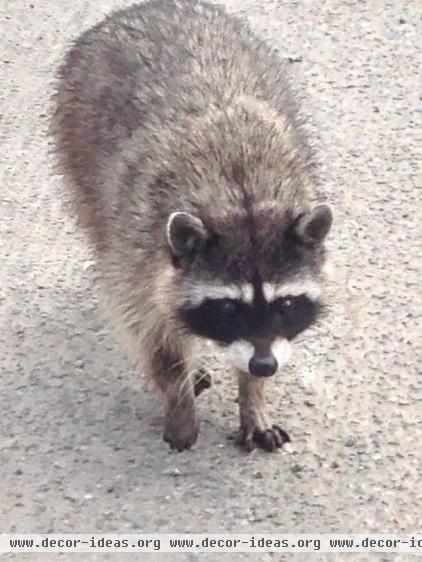
Then I remembered the merry band of raccoons who call my neighborhood home, too. For the decade that I’ve lived in this country-like suburb not far from San Francisco, I’ve had a love-hate relationship with those furry fiends. I love their beautiful facial features and lumbering walk, but I loathe their crafty ability to taunt my dogs from behind glass doors, how they sneak into my garage to chow on emergency supplies, and the constant mess they make of the river-rock garden borders my husband and I thought were a great landscaping idea.
No matter how much more brain mass we might have than these creatures, my husband and I are all too often the butt of their jokes. But I wouldn’t trade in my wild four-legged neighbors, which also include squirrels, deer, skunks, coyotes, foxes, bobcats and the occasional mountain lion, for anything. I’d just prefer them not roughhousing on my roof in the middle of the night like a drunken football team. And I know I’m not alone.
I spoke with the good folks at the Peninsula Humane Society (PHS) & SPCA to get some ideas for how those of us living with backyard wildlife can do so harmoniously, as opposed to having an us-versus-them mentality, which I sometimes find myself succumbing to.
Photo by George Yatrakis
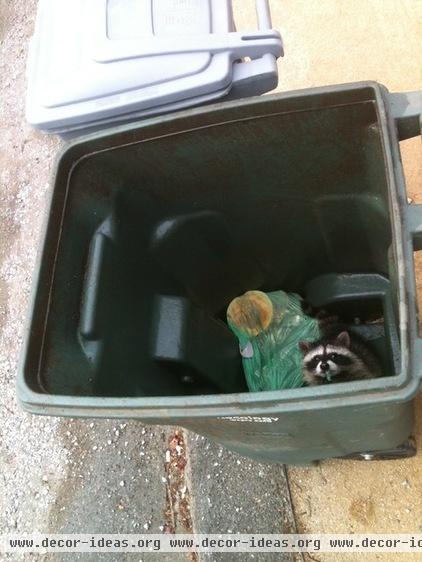
What Humans Do to Unwittingly Attract Critters to Our Yards
Though we sometimes demonize these little creatures, calling them pests, raccoons are just doing what comes naturally to them. And each species is looking to feed its needs in different ways throughout the year. “As temperatures drop, for example,” says Patrick Hogan, cosupervisor of wildlife at PHS, “raccoons are looking for high-protein nourishment, like grub worms.”
This explains those overturned landscaping rocks I’ve been struggling to return to place in recent weeks to no lasting avail. It also explains why you’re probably finding your sod folded back each morning. Fortunately, though, you aren’t likely to find any critters nesting in your crawl spaces ... yet. That tends to happen in late winter or early spring, when animals are looking to find a warm nest for their babies.
Yep, our properties are havens for wildlife, but there are humane ways to discourage critters from making your home their fraternity house.
“We inadvertently provide wildlife with food, water and/or shelter,” says Scott Delucchi, senior vice president of community relations at PHS. “Food could be fallen fruit from a tree. Water could be from the pet’s bowl. Shelter could be access to an area under a deck or hot tub.”
Photo by Tobias Larson
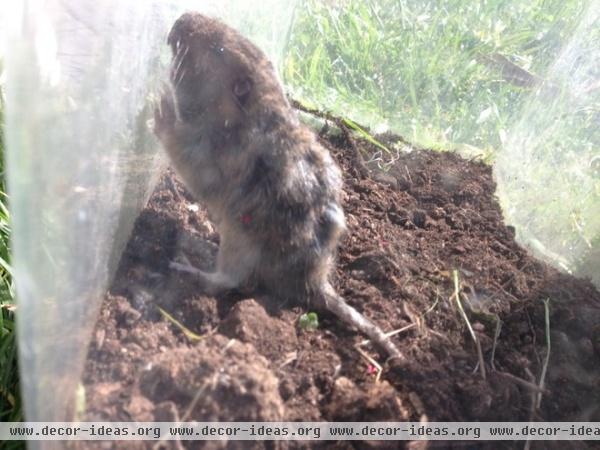
Don't worry, this little creature was immediately released after this photo was snapped by a critter-loving child who couldn't believe his luck.
As tempting as it might seem, trapping and relocating isn’t likely legal in your area, and is certainly not a humane option. Doing so puts the critter in another’s territory only to cause problems for it that we humans aren’t privy to. And by removing a critter from your property, you’re often simply putting a vacancy sign up for the next one of its kind. “Even licensed pest control operators can’t legally relocate,” Hogan says. “The only thing they’re allowed to do is euthanize the animal, which is something they don’t often advertise to clients.”
Instead of getting rid of the animal in question, Delucchi offers this solution: “Get rid of whatever is attracting the animal.”
How to make your home and yard less hospitable to animals:
Remove sources of food and water. Secure garbage lids, trim trees so they don’t provide access to the roof and secure access points to sheds and crawl spaces. Get into the mind of the animal you wish to deter to anticipate issues before they arise.
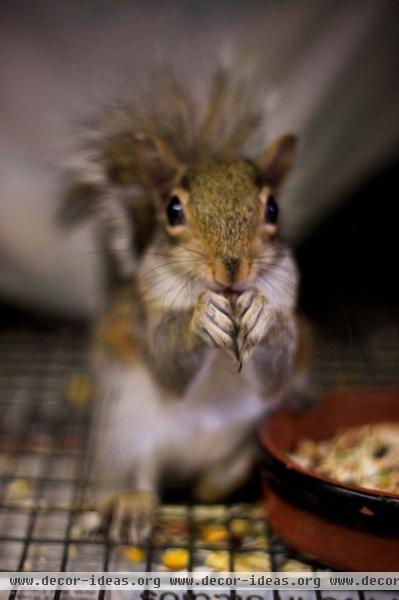
Thinking Like a Critter
Raccoons. They're good climbers and have extremely sensitive paws. Thwart them from climbing over fences (or messing with rock borders) by adding hot peppers to the site. Dried pepper flakes or a water-based mixture you make yourself would work well. The spiciness will feel uncomfortable to their paws and encourage them to move on to an easier target within their three-block territory.
Skunks. They like to dig and burrow. If you see an opening under your house or shed, patch it to avoid unwanted houseguests of this species.
Squirrels. They’re attracted to fruit and nuts on trees and those tasty treats from bird feeders. “They don’t understand that what’s out for the birds isn’t meant for them,” notes Hogan.
If you can’t stand the mess that squirrels make, reconsider having that fruit tree or bird feeder at all. If you’re thinking about netting off a tree to dissuade squirrels, don’t. Netting can harm birds.
Photo by Cyndi Kupier
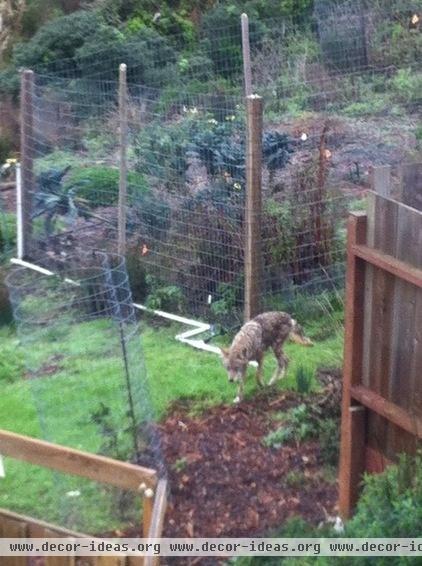
“We hear of folks all the time who purposely attract certain species with food only to realize they’re also attracting unwanted species,” says Delucchi. “There is no such thing as deer- or bird-specific food. Animals are opportunistic and not picky. The best way to avoid attracting one unwanted species is to feed no species.”
Photo by Colleen Smith
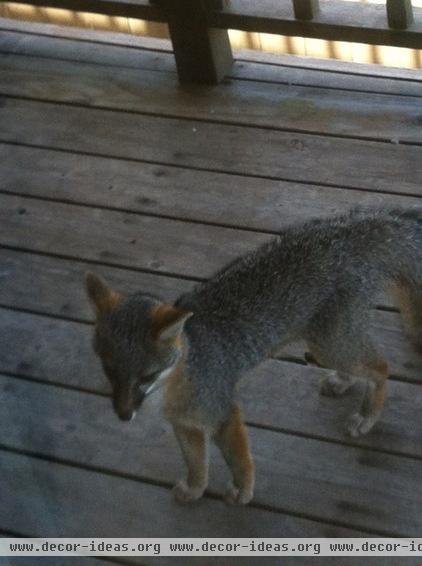
Foxes. You know the expression about those crafty critters in the chicken coop. Don’t get upset with the fox or the other usual suspects. Be smarter than them all by protecting your flock before a predator has a chance to make a meal out of it. “People need to give their chickens and any other outdoor pets a secure place at night,” says Hogan.
This means using thick wire with small openings so predators can’t reach inside. Also, use dog and cat doors that lock. “I hear too often of raccoons letting themselves inside a house thanks to an unlocked pet door,” says Hogan. “Don’t give them such an easy opportunity.”
Photo by Colleen Smith

Deer. Deer love roses and many of the other flora you work hard to cultivate. There are what Hogan calls Band-Aid solutions, like hanging human hair, soap, dryer lint or other unnaturally clean scents of humans for a temporary scare. However, if you don’t secure your perimeter with tall enough fencing, eventually Bambi will be back for that prized garden of yours.
Photo by Jettav DeFilippis

Gophers, moles and other tunneling rodents. Have you seen the movie Caddyshack? If you have a beloved lawn, you’ve likely experienced firsthand your own version of the gopher act, which is not so funny in real life. “If you’re redoing your landscape, work with a designer to put a smart plan in place. Be proactive so that gophers and moles can’t be a problem that you’ll later want to eradicate,” says Hogan.
This means laying down chicken wire with small openings that they can’t squeeze through. Also, use chatter-sounding stakes that make prospective inhabitants think there’s already someone residing here. Neither of these tools is harmful to wildlife, but they both do an effective job discouraging creatures from hanging around.
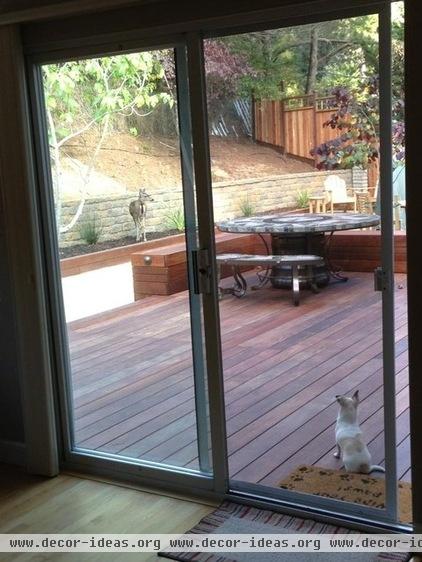
Thinking like critters before they do any damage will keep you, your pets and wildlife safe.
Photo by Kelly Edelhart
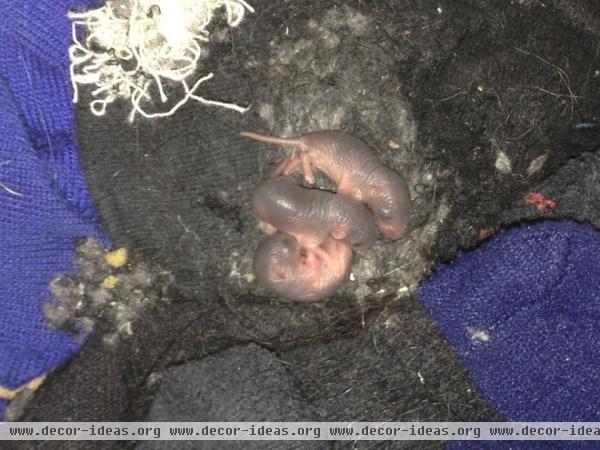
These are baby mice born in a child's warm, cozy closet. Needless to say, mom was less than thrilled to find them, though she made sure they were safely moved to the backyard before the rodent family became permanent houseguests. After that, she found and sealed the critters' exterior entry point.
Tips for humanely evicting unwanted houseguests. Despite your best efforts, a motivated critter just might outsmart you. Should you find that a creature is nesting in an enclosed area of your home, don’t attempt to scare it out or send the dog under the house to flush it out. That would be asking for somebody to get hurt. Instead, Hogan advises following this three-step approach for the best and most humane results.
1. Side a pie tin filled with store-bought ammonia as deep into the affected area as you can. “This will temporarily irritate an animal’s mucus membranes without causing any lasting effects,” he says. “If there’s no way to slide a pan in, use ammonia-soaked rags and toss as far inside the enclosed space as possible." Do not stuff up the opening with the rags, as this will block the animal's escape route.
2. Put a radio in the space programmed to a talk station. The human voices won’t sound warm and fuzzy to your “guest.”
3. Shine a bright shop light in the space. “Animals want to birth their babies in a safe space,” says Hogan. “If they decide it’s not, they’ll leave on their own, never to return.”
Photo by Sam Anderson
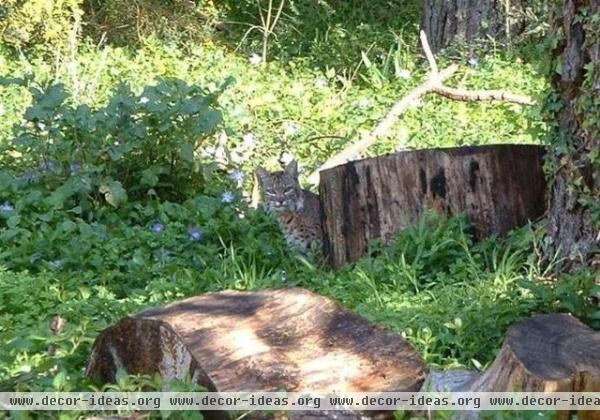
Critters are smart; they need to be to survive. It’s our job as humans to make sure we’re wise and compassionate enough to keep them out of harm’s way.
Photo by Nancy Murphy
Your turn: Please share a photo of your wild neighbors.
Related Articles Recommended












